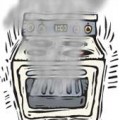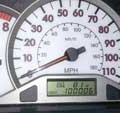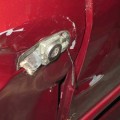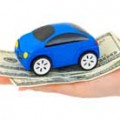Your dream machine is parked in the garage. You look after it like a child – maybe more than your own kids! However, despite all the blood, sweat and tears you put into your car, it can still need repairs. Suddenly, you could be losing a whole lot of money on fixing your ride.
One of the toughest decisions to make is deciding whether you need to repair or replace the part on your car.
Here’s 10 of the most common car problems and how much they cost, based on estimates for an ’08 Mustang:
- Clutch: $1,535
- Head gasket: $2,062
- Catalytic converter: $1,841
- Fuel injector: $823
- ECU: $729
- Fuel pump: $688
- Brake pads: $394
- Radiator: $577
- Alternator: $529
- Air conditioning compressor: $598
We’ve created a handy guide for you to consult when you need to choose between repairing and replacing a part. Start at the top with the main question: Is your car paid off?

My Car Isn’t Paid Off
Be sure to consider these factors if you’re still saddled with car payments.
- Is the cost to repair the part more than 12 monthly payments? If not, replace the part.
- If you’re paying off a new car – new is considered less than five years old – have the part repaired. If not, move onto the next step.
- Was your first major repair on the car more than $1,000? If so, repair the part. If not, you need to check if there were three or more other repairs that went along with the first one.
- Were there three or more repairs? If not, you’ll have to ask yourself if you feel safe driving. If you do, repair the part. If you don’t, replace it.
- When you had three or more other repairs, another thing to consider is if your car’s mileage is more than 152,137. If yes, replace the part. If not, check if the total repair cost exceeds the car’s value.
- Does the total repair cost exceed the car’s value? If yes, replace the part. If not, go back to the “feeling safe while driving” section.
My Car Is Paid Off
If your first repair was more than six months ago, start down the left side of the chart.
- Were your total repair costs greater than $5,800? If so, you should check whether your mileage is more than 152,137. If not, ask yourself if you feel safe driving.
- If your mileage is more than 152,137, replace the part. If not, ask yourself if you feel safe driving. If you don’t feel safe, replace the part. If you do, ask yourself if your car’s value is greater than the repair cost. If it isn’t, replace the part. If it is, repair it.
If your first repair was in the last six months, go down the right side of the chart.
- Did your repair cost less than $5,800? If yes, repair the part. If not, ask yourself if the car’s worth more than the repair cost. If it isn’t, replace the part. If it is, repair it!
Should You Repair or Replace That Car Part? – Final Thoughts
Although this chart is useful for diagnosing your car’s problems, every problem is unique. Always see a mechanic and check your finances to ensure you’re making the best choice.
Anum Yoon is a personal finance blogger and writer. She created and maintains her personal finance blog Current on Currency. You can subscribe to her blog newsletter right here for her weekly updates.










When I buy a car, I buy it new. I keep it for 10 years. If it is in good condition and I can keep it past 10 years, it is a bonus.
For example, I bought a brand new Ford Mustang in 2000. I kept is for 11.5 years – there were two unplanned maintenance events that added up to a total of $1600, not bad at all.
Then I traded it in for another new car.
Michael recently posted…BookScouter Review
Michael,
That’s pretty good. I wonder how the numbers would have looked if you would have bought two used cars and kept them for 5 years each?